nonGeographicDataset
Type of resources
Topics
Keywords
Contact for the resource
Provided by
Years
Formats
Representation types
Update frequencies
Scale
-
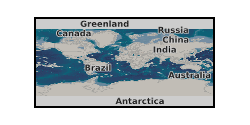
Coordinated by Haroun Mahgerefteh at UCL, the EC funded FP7 CO2QUEST project addressed the main challenges associated with determining the optimal composition and purity of CO2 product streams derived from carbon capture systems for enabling its safe and economic transport and storage. The project brought together academics and major stakeholders to perform computational studies backed-up by large-scale experiments aimed at identifying CO2 mixtures that have the most profound impact on the different parts of the CCS chain. The project ran from March 2013 until June 2016, involving 9 partners across Europe, including from Canada and China. It resulted in over 100 peer reviewed journal publications and conference proceedings, three international conferences and several newsletters, receiving the IChemE Highly Commended Global Process Safety Award in 2016. More information about CO2QUEST including its objectives, deliverables and list of publications may be found at: http://www.co2quest.eu/
-
This dataset contains semi-structure qualitative interview transcripts (n=30) with women in Greater Manchester, about how they conceptualize air pollution and envision a city with clean air. This data has been fully anonymized by the author. The data collection took place between 2018 and 2019. Interviews were designed to last approximately 1h. The questioning route received full ethical approval from Manchester Metropolitan University Academic Ethics Committee. Participants were recruited following a purposive sampling technique, assuring that the people being interviewed are relevant to the research question and that different segments of the population are interviewed. This was complemented with a snowball sampling technique to expand the sample size of relevant interviewees. Before the interviews started, the background of the researcher, the project, as well as the structure of the interviews were explained to the participants, and verbal consent was asked to proceed with the interview, to record, and to use the data in the form of papers or conference presentations, as well as to make the data publicly available. The interviews were composed of two sections. The first part gathered data in relation to socio-demographic factors to make sure that women with different backgrounds were represented (i.e. age, ethnicity, nationality, number of children, occupation, co-habitation, responsibility for unpaid work, carbon footprint, and main form of transport). The second part contained questions about the present of air pollution and about the future of Greater Manchester and cleaner air. The questions were: (1) How do you feel when you hear the term air pollution? (2) How would you describe air pollution in your own words? (3) Which of your daily activities contribute to air pollution the most? (4) Is air pollution a concern for you? (5) Do you think Greater Manchester is polluted, and do you recognize any places as being more polluted than others? (6) When you decide on a form of transport, what do you value most? (7) How do you feel when you hear a city with clean air? (8) How would you describe a city with clean air? (9) If you could change anything in Greater Manchester, so that it becomes a city with clean air, what would you change? Sample description: 30 women in Greater Manchester. Age: < 40 (14 participants), 40-60 (11 participants), > 60 (5 participants). Nationality: British (23 participants), Other nationalities (7 participants). Ethnicity: White (25 participants) Other ethnic groups (5 participants). Occupation: Policy-maker (3 participants), Teacher (4 participants), University lecturer or researcher (6 participants), Student (2 participants), Environmental manager (2 participants), Business professional (3 participants), Architect (1 participants), Service and sales worker (3 participants), Retired (6 participants). Children: Yes (17 participants), No (13 participants). Responsibility for unpaid work: Myself (9 participants), 50% - 50% split (6 participants), Me > 50% (10 participants), Me < 50% (5 participants). Co-habitation: Alone (4 participants), Partner (16 participants), Partner and children (6 participants), Children (3 participants), Flatmate (1 participants). Main form of transport: Car (11 participants), Walk (9 participants), Public transport (6 participants), Bike (4 participants). Carbon footprint: High (23 participants), Low (7 participants). ",
-
These data are held by the BADC for the Natural Environment Research Council (NERC) Molecular Spectroscopy Facility (MSF). MSF provides world-class scientific equipment and support for infrared (IR),visible, and ultraviolet (UV) spectroscopy. The MSF laboratories are used by many UK and international customers in a wide range of research and development programmes. The data are spectra of various atmospheric gases. These data are public.
-
Airborne atmospheric measurements from core and non-core instrument suites data on board the FAAM BAE-146 aircraft during flight 3 for International Transport of Ozone and Precursors (ITOP) project.
-
Airborne atmospheric measurements from core and non-core instrument suites data on board the FAAM BAE-146 aircraft collected for Autumn and Winter Experiments (AUTEX / WINTEX) project.
-
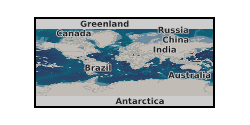
Age-depth models for Pb-210 datasets. The St Croix Watershed Research Station, of the Science Museum of Minnesota, kindly made available 210Pb datasets that have been measured in their lab over the past decades. The datasets come mostly from North American lakes. These datasets were used to produce both chronologies using the 'classical' CRS (Constant Rate of Supply) approach and also using a recently developed Bayesian alternative called 'Plum'. Both approaches were used in order to compare the two approaches. The 210Pb data will also be deposited in the neotomadb.org database. The dataset consists of 3 files; 1. Rcode_Pb210.R R code to process the data files, produce age-depth models and compare them. 2. StCroix_agemodel_output.zip Output of age-model runs of the St Croix datasets 3. StCroix_xlxs_files.zip Excel files of the St Croix Pb-210 datasets
-
In this mesocosm study, three types of wet wipes (plastic containing, and home and commercially compostable) colonised with E. coli were buried in beach sand and their degradation, tensile strength, and concentration of E. coli was quantified over 15 weeks. Wipes were firstly passed through a series of treatments to simulate their journey from the bathroom to the beach. Water characteristics (pH, salinity) of these water types were measured. Full details about this nonGeographicDataset can be found at https://doi.org/10.5285/19a8083b-afa4-40b9-91bf-7a529eea870d
-
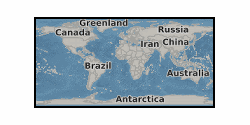
Controlled CO2 release experiments and studies of natural CO2 seeps have been undertaken at sites across the globe for CCS applications. The scientific motivation, experimental design, baseline assessment and CO2 detection and monitoring equipment deployed vary significantly between these study sites, addressing questions including impacts on benthic communities, testing of novel monitoring technologies, quantifying seep formation/style and determining CO2 flux rates. A review and synthesis of these sites studied for CCS will provide valuable information to: i. Enable the design of effective monitoring and survey strategies ii. Identify realistic site-specific environmental and ecosystem impact scenarios iii. Rationalise regulatory definitions with what is scientifically likely or achievable iv. Guide novel future scientific studies at natural or artificial release sites. Two global databases were constructed in Spring 2013, informed by a wide literature review and, where appropriate, contact with the research project leader. i. Artificial CO2 release sites ii. Natural CO2 seeps studied for CCS purposes The location and select information from each of these datasets are intended to be displayed as separate GoogleMap files which can be embedded in the QICS or UKCCSRC web server. These databases are not expected to be complete. Information should be added as more publications or become available or more case studies emerge or are set up. To facilitate this process, a contact email should be included beneath the map to allow viewers to recommend new or overlooked study sites for the dataset. Grant number: UKCCSRC-C1-31. These data are currently restricted.
-
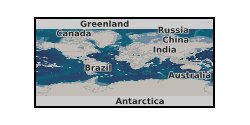
Carbon Capture and Storage (CCS) is a crucial technology to enable the decarbonisation of fossil fuel electricity generation. The UK has considerable potential for geological storage of CO2 under the North Sea and extensive offshore industry experience that could be applied. While initial storage is likely to be undertaken in depleted oil and gas fields, much larger saline aquifer formations are estimated to have sufficient capacity to securely contain 100 years of current UK fossil fuel power plant CO2 emissions. The CO2 Aquifer Storage Site Evaluation and Monitoring (CASSEM) project brings together the experience and different working practices of utilities, offshore operators, engineering contractors, and academic researchers to build collective understanding and develop expertise. CASSEM produced both new scientific knowledge and detailed insight into the CCS industry, developing best-value methods for the evaluation of saline aquifer formations for CO2 storage. Alongside work to assess the storage potential of two saline aquifer formations in close proximity to large coal power plant, CASSEM applied a novel Features, Events and Processes method to explore perceptions of risk in the work undertaken. This identified areas of industry and research community uncertainty and unfamiliarity to enable targeted investment of resource to reduce overall project risk. An openly accessible and flexible full chain (CO2 capture, transport and storage) costing model was developed allowing the CCS community to assess and explore overall costs. CASSEM's work also included the first use of citizen panels in the regions investigated for storage to assess public perception and educate the general public about CCS.
-
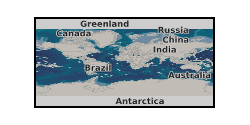
Technical report from CO2MultiStore project, component of ‘Optimising CO2 storage in geological formations: a case study offshore Scotland, September 2015. The report captures knowledge gained from the process, progress and findings of the research that is applicable to the development of any multi-user storage resource. Available for download at http://hdl.handle.net/1842/16475.
 NERC Data Catalogue Service
NERC Data Catalogue Service